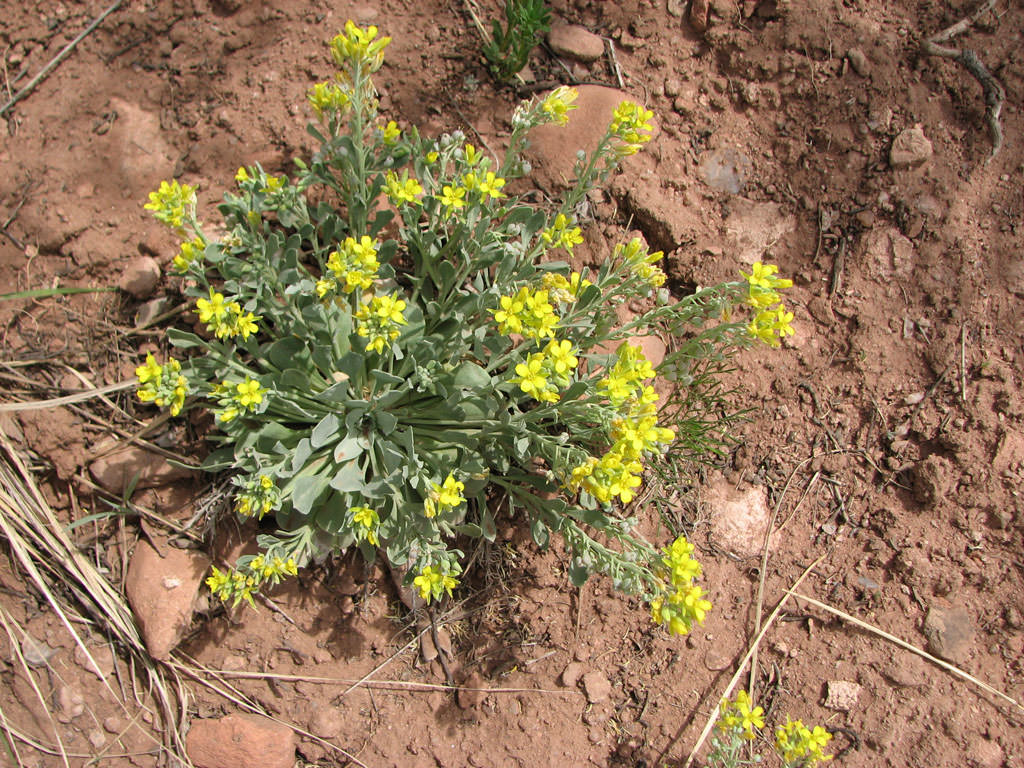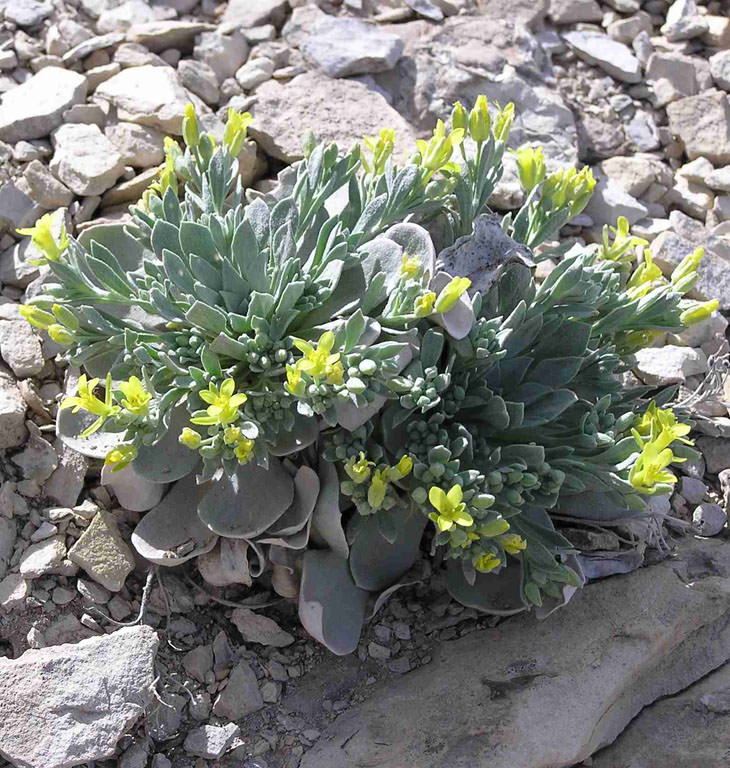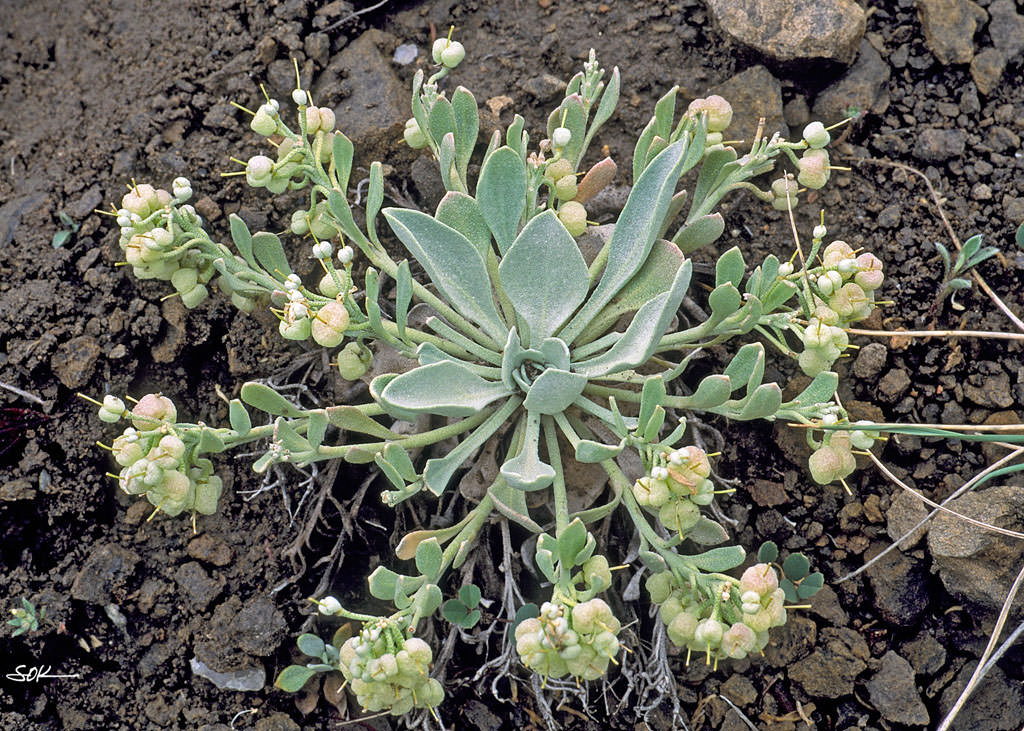Scientific Name : Physaria bellii
Author : Mulligan![]() NatureServe Explorer
NatureServe Explorer
Common Name : Bell's Twinpod
![]() Current Research Activities
Current Research Activities
![]() 1997 profile
1997 profile
Click link below for details.
Taxonomy
Brassicaceae (mustard family)
Ranks and Status
State Rank : S2S3
State Rank Reason : Physaria bellii is endemic to Colorado, USA, where it is mostly restricted to Niobrara and Pierre Shale Formations in Boulder and Larimer counties. There are 24 occurrences with as many as one million individual plants. However, the species faces variety of threats including mining, suburban expansion along the Front Range, road construction, and invasion of its habitat by noxious weeds such as cheatgrass, smooth brome, and diffuse knapweed. Physaria bellii is also considered to be extremely vulnerable to the effects of climate change.
U.S. Endangered Species Act : none
Colorado Threatened and Endangered List : none
Other Statuses : SWAP Tier 2
Description and Phenology
General Description:
Perennials with dense racemes of yellow flowers and basal leaves that form a strong rosette. Plants rise from a simple caudex that is densely (silvery) pubescent. The stems are simple from the base of the plants, decumbent to nearly prostrate, and 0.5-1.3 dm long. Basal leaf blades are broadly obovate, with shallowly dentate margins. Cauline leaves are oblanceolate to broadly obovate, 1-2.5 cm, with entire margins. Fruits are arranged in pairs (hence the common name twinpod). The fruit pods are slightly flattened (contrary to replum) to uncompressed, 4-9 × 2-8 mm, and the apical and basal sinuses are narrow and deep.
Look Alikes:
Physaria vitulifera has larger, fiddle shaped leaves, and the constriction separating the locules of the fruit is much deeper above than below. The basal leaf margins on P. bellii are not incised, while they are deeply and broadly incised on P. vitulifera. The hybrid species, P. vitulifera x bellii found in Jefferson County, has incised leaves and wrinkly fruits (Ackerfield 2012, Smith et al. 2011).
Phenology:
Flowers May through June, fruits July and August (Colorado Natural Heritage Program 2012).
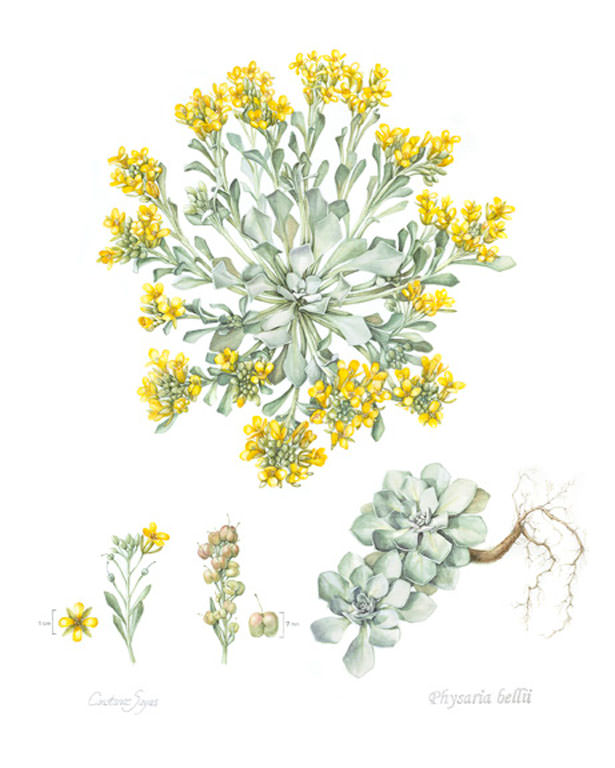 |
Habitat
Physaria bellii is found along the Front Range foothills often in shale and limestone soils of the Fountain/Ingleside, Lykins, Niobrara, and Pierre formations. This species is found in association with grassland and shrubland habitats, in rocky areas and road cuts. Commonly associated taxa include: Cercocarpus montanus, Oryzopsis hymenoides, Gutierrezia sarothrae, Rhus trilobata, Lesquerella ludoviciana, Heterostipa neomexicana. Penstemon secundiflorus, Eriogonum brevicaule, Opuntia, Dalea,Yucca, Sphaeralcea, and Heterotheca (Flora of North America 2010, Colorado Natural Heritage Program 2013).
click on image to enlarge
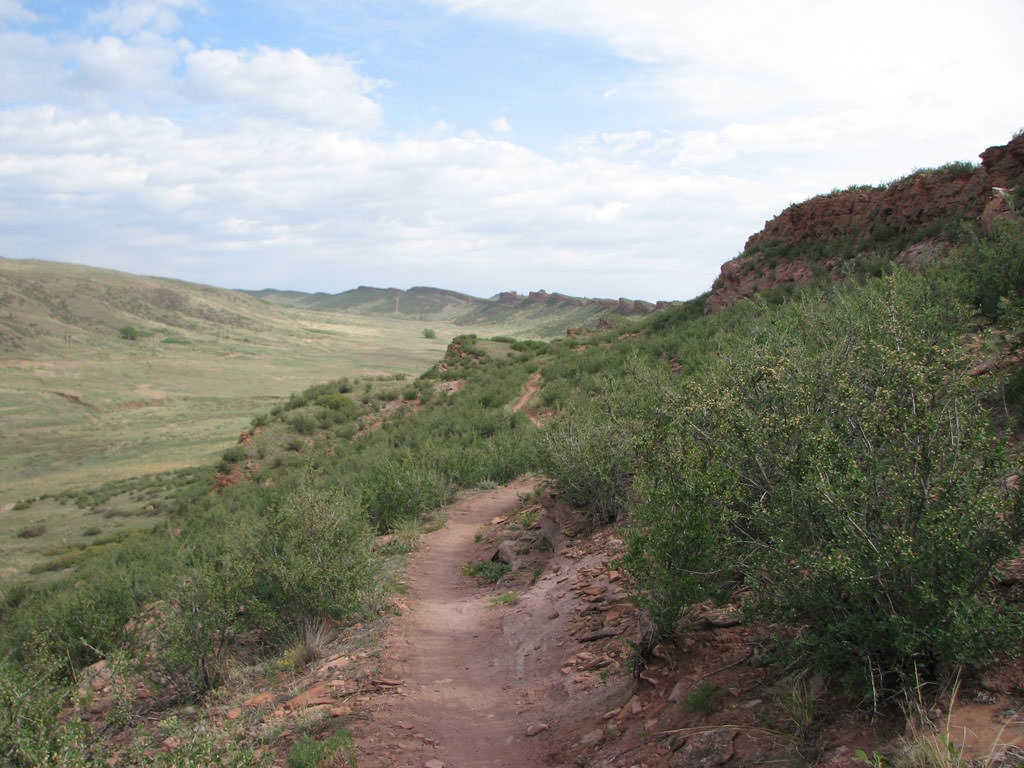 |
Elevation Range:
5,027 - 6,552 feet (1,532 - 1,997 meters)
Distribution
Colorado Endemic:
Yes
Range:
Physaria bellii is endemic to Colorado, (USA) where it is mostly restricted to Niobrara and Pierre Shale Formations in Boulder and Larimer counties. Estimated range extent in Colorado of 650 square kilometers was calculated in GeoCAT using occurrence data provided by the Colorado Natural Heritage Program (2023).
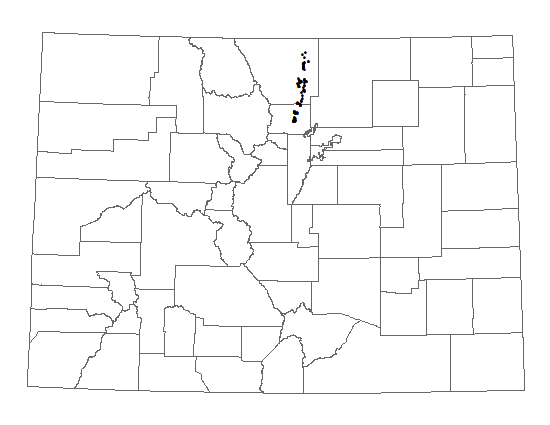 Click on map to enlarge |
Threats and Management Issues
The primary threat to Physaria bellii is from residential development along the Front Range of Colorado. Additional potential threats are limestone mining operations, and road construction and maintenance. Invasion of habitat by noxious weeds such as cheatgrass, smooth brome, and diffuse knapweed, may also be a threat to some occurrences. Many occurrences have been destroyed or degraded by limestone mining and housing subdivisions, however, the largest and highest quality occurrences are still viable. This species is considered to be extremely vulnerable to climate change (Handwerk et al. 2015).
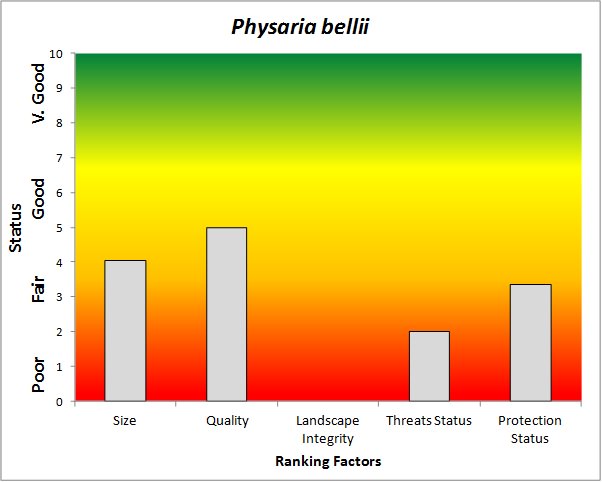 Summary results of an analysis of the status of Physaria bellii based on several ranking factors. This species was concluded to be weakly conserved. From Rondeau et al. 2011. |
References
- Ackerfield, J. 2015. Flora of Colorado. BRIT Press, Botanical Research Institute of Texas, Fort Worth, TX. 818 pp.
- Colorado Native Plant Society. 1989. Rare plants of Colorado. Rocky Mountain Nature Association, Colorado Native Plant Society, Estes Park, Colorado. 73 pp.
- Flora of North America Editorial Committee (FNA). 2010. Flora of North America north of Mexico. Vol. 7. Magnoliophyta: Salicaceae to Brassicaceae. Oxford University Press, New York. xxii + 797 pp.
- Handwerk, J., L. Grunau, and S. Panjabi. 2015. Colorado Wildlife Action Plan: 2015 Rare Plant Addendum. Colorado Natural Heritage Program, Colorado State University, Fort Collins, Colorado, USA.
- Jennings, W. 1989. Final Report Colorado Natural History Small Grants Program. Prepared for The Nature Conservancy.
- Kothera, L., S. M. Ward, and S. E. Carney. 2007. Assessing the threat from hybridization to the rare endemic Physaria bellii Mulligan (Brassicaceae). Biological Conservation 140: 110-118.
- Mulligan, G.A. 1966. Two new species of Physaria in Colorado. Canadian Journal of Botany, vol. 44, pp. 1661-1665.
- Neely, B., S. Panjabi, E. Lane, P. Lewis, C. Dawson, A. Kratz, B. Kurzel, T. Hogan, J. Handwerk, S. Krishnan, J. Neale, and N. Ripley. 2009. Colorado Rare Plant Conservation Strategy, Developed by the Colorado Rare Plant conservation Initiative. The Nature Conservancy, Boulder, Colorado, 117 pp.
- O'Kane, S. L. 1988. Colorado's Rare Flora. Great Basin Naturalist. 48(4):434-484.
- Peterson, J. S. and W. Harmon. 1981. Status report for Physaria bellii. Unpublished report prepared for the Colorado Natural Areas Program, Denver, CO.
- Rocky Mountain Society of Botanical Artists. 2009. RARE Imperiled Plants of Colorado, a traveling art exhibition. Exhibition catalogue developed by the Denver Botanic Gardens and Steamboat Art Museum.
- Rollins, R.C. 1993. The Cruciferae of Continental North America:Systematics of the Mustard Family from the Arctic to Panama. Stanford University Press. Stanford, CA.
- Spackman, S., B. Jennings, J. Coles, C. Dawson, M. Minton, A. Kratz, and C. Spurrier. 1997. Colorado rare plant field guide. Prepared for Bureau of Land Management, U.S. Forest Service and U.S. Fish and Wildlife Service by Colorado Natural Heritage Program.
- USDA, NRCS. 2022. The PLANTS Database. National Plant Data Team, Greensboro, NC 27401-4901 USA.
- Weber, W. A. and R. C. Wittmann. 2012. Colorado Flora, Eastern Slope, A Field Guide to the Vascular Plants, Fourth Edition. Boulder, Colorado. 555 pp.


